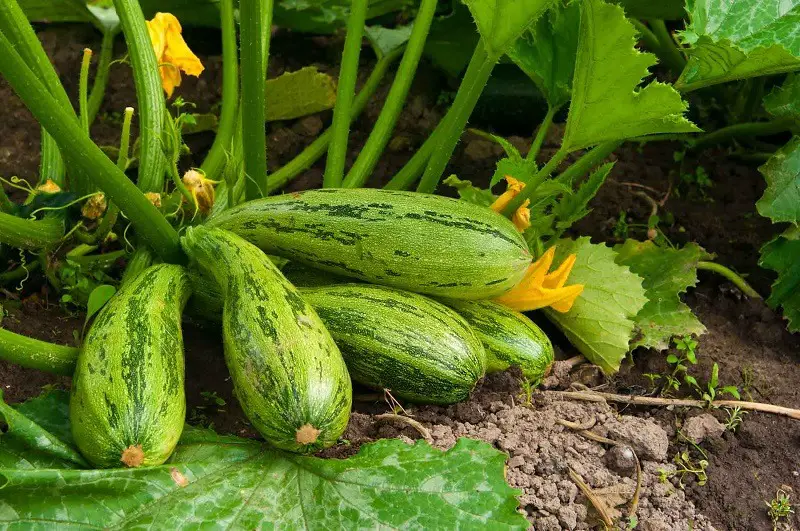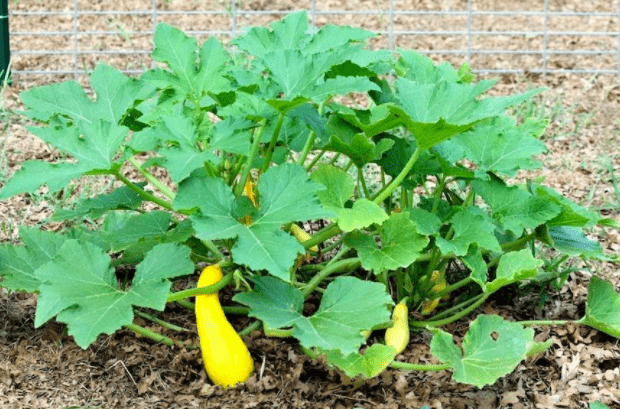I have been growing all kinds of squash in my summer garden. The lush-green foliages with fruits make my garden look beautiful. But I usually struggle with squash leaves turning yellow every spring and summer season.
So, why are my squash leaves turning yellow? The possible causes are improper watering regime, nutrient deficiency, insufficient sunlight, vine borers, bugs, and diseases. The golden rule is to identify the exact cause and implement measures for fixing it.
The information in this article will help you identify exact causes and prevention measures based on the symptoms. Take the time to read through and see the essence of removing yellow squash leaves in advance.

Causes of Squash Leaves Turning Yellow
Overwatering Problem
Squash plants thrive in slightly moist soil. The condition allows this plant to experience vegetative growth and develop lush green foliages.
Too much water in the potting soil increases the risk of root rot. The fungal disease inhibits the squash root systems from undertaking their physiological activities.
Overwatered squash leaves turn yellow due to insufficient nutrients, water, and other vital mineral ions uptake from the soil.
I recommend allowing the potting soil to dry and revive the squash green leaves back. The golden rule is to inspect the moisture content level before watering your squash plants.
Inconsistent Watering Habits
Squash plants prefer consistent soil moisture throughout the year. The succulent stems do not imply that the squash plants are resistant to drought.
Too little water makes squash leaves curl and turn yellow or brown after some time. Curling and yellowing of leaves are due to plant dehydration.
The vegetable plants tend to curl leaves to reduce the transpiration rate. If the drought persists, your squash plants are likely to die.
I recommend watering your vegetable plants twice a week during spring and summer. Reduce the watering frequency in winter due to low transpiration and evaporation.
Be sure to inspect the moisture content by pressing your index finger in the soil. Soak the potting mix if 2-3 inches of topsoil is dry.
Nutrients Deficiencies in the Soil
Soil nutrient deficiency is the leading cause of squash leaves turning yellow. Squash plants need an array of nutrients to enhance lush-green foliages.
Figuring out the root cause can be challenging in this situation. I recommend taking your soil to a local lab for testing and identification of the missing nutrients.
Nitrogen deficiency will turn the leaves yellow and cause stunted growth. Use nitrogen fertilizer to feed your squash plants and resolve the yellowing of leaves.
Iron deficiency may also cause yellow squash leaves. The condition makes the new growths turn yellow and old foliages stay green. Use a liquid iron to spray on the squash foliages.
Lack of Enough Sunlight
Squash plants need and love much sunlight. The light enhances the formation of chloroplast to spearhead the foliage green pigment development.
Low light is the reason behind the squash leaves turning yellow. The discoloration is due to insufficient chloroplast formation.
I recommend placing your squash plants in sunlight for six to eight hours a day. Be sure to provide adequate water and nutrients to prevent squash plant leaves from turning yellow.
Pests Bothering Squash Plants
Pest infestations are inevitable in every summer garden. These sap-sucking creatures munch the leaves and damage their tissues.
Aphids, spider mites, leafhoppers, and whiteflies are the leading pests that attack squash. These insects appear on the leaf’s upper surface or underside.
Examine the squash leaves to identify any pests on them. Use insecticidal soap or organic methods to get rid of insects on the squash leaves.
Diseases Damaging the Squash Plants
Treating and handling diseases on squash plants is more troublesome than pests. Squash plants are more susceptible to a variety of diseases that make the leaves turn yellow.
The mosaic virus makes squash leaves wrinkle and develops yellow spots. The aphids and spider mites are known for spreading the disease.
Downy mildew is another squash disease that causes yellow spots on the upper leaf surface. The yellow leaves later turn brown.
Frequently Asked Questions
Should I Remove Yellow Leaves from My Squash Plants?
No. Removing yellow squash leaves tends to open a vascular system for bacteria and virus entry. It increases the risk of killing the squash plants.
The best option is to allow the yellow leaves to wither and drop off from the plant. Do not prune your squash plants at all.
Why Are My Squash Leaves Turning Yellow with White Spots?
White spots on yellow squash leaves are due to powdery mildew. The fungal disease is responsible for the formation of white lesions on the leaves.
Use bicarbonate solution to spray on the squash leaves. It creates an alkaline environment that inhibits fungal growth on squash leaves.
Why Are My Squash Leaves Turning Brown?
Drought condition is the reason behind winter squash leaves turning brown. Insufficient water around the root system inhibits moisture transport to the leaves and prevents them from drying and dying.
Water your winter squash a little bit each day to allow the vegetable plant to stay healthy and happy. It also reduces the risk of brown squash leaves from happening.
Why Are My Squash Leaves Turning Yellow and Brown?
Too much or too little water is the potential cause of squash leaves turning yellow and brown. Be sure to develop a strict watering routine to prevent underwatering and overwatering issues.
Other possible causes of squash leaves turning yellow and brown are nutrient deficiency, pests, and diseases. Examine your vegetable plant to identify the exact cause of the leaf problem.

Conclusion
Squash are cucurbit plants with many species or varieties. These vegetable plants produce lush-green foliages. Squash plants are categorized into winter and summer squash.
Both squash types are tolerant to cold and vulnerable to various leaves problems. Squash leaves turning yellow are due to the watering problem, lack of sunlight, pests, and diseases.
The yellow squash leaves are preventable with the provision of ultimate care and proper growing conditions. Be sure to inspect the vegetable more often to detect early symptoms.
I hope the information in this article will help you fix the yellow squash leaves. Let us know your experience in dealing with squash leaves turning yellow in the comment section.